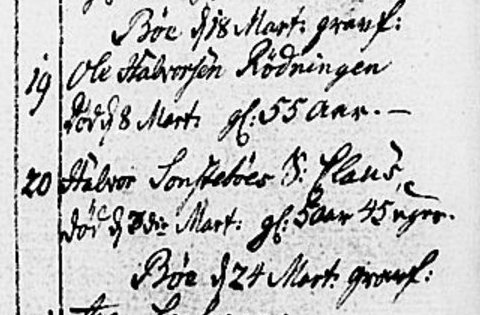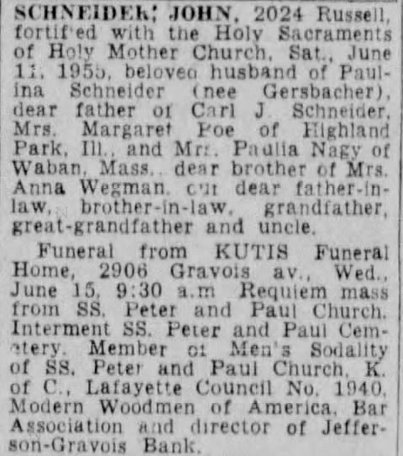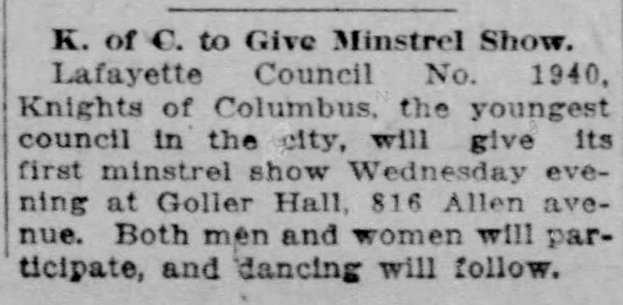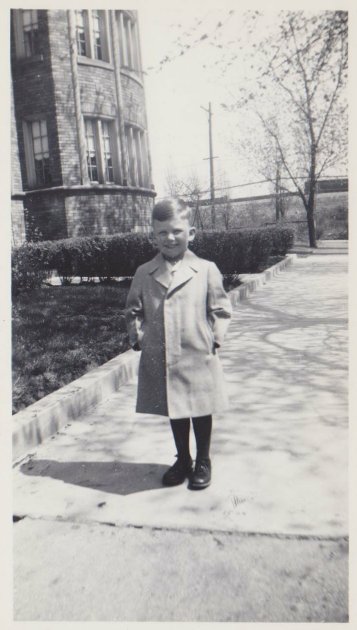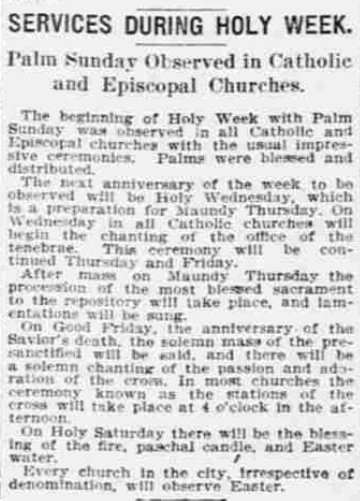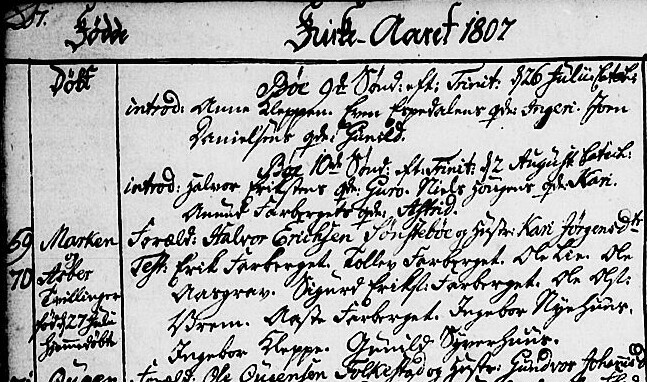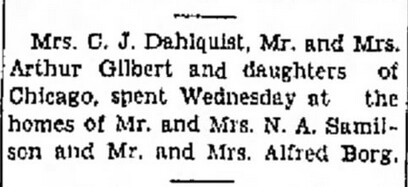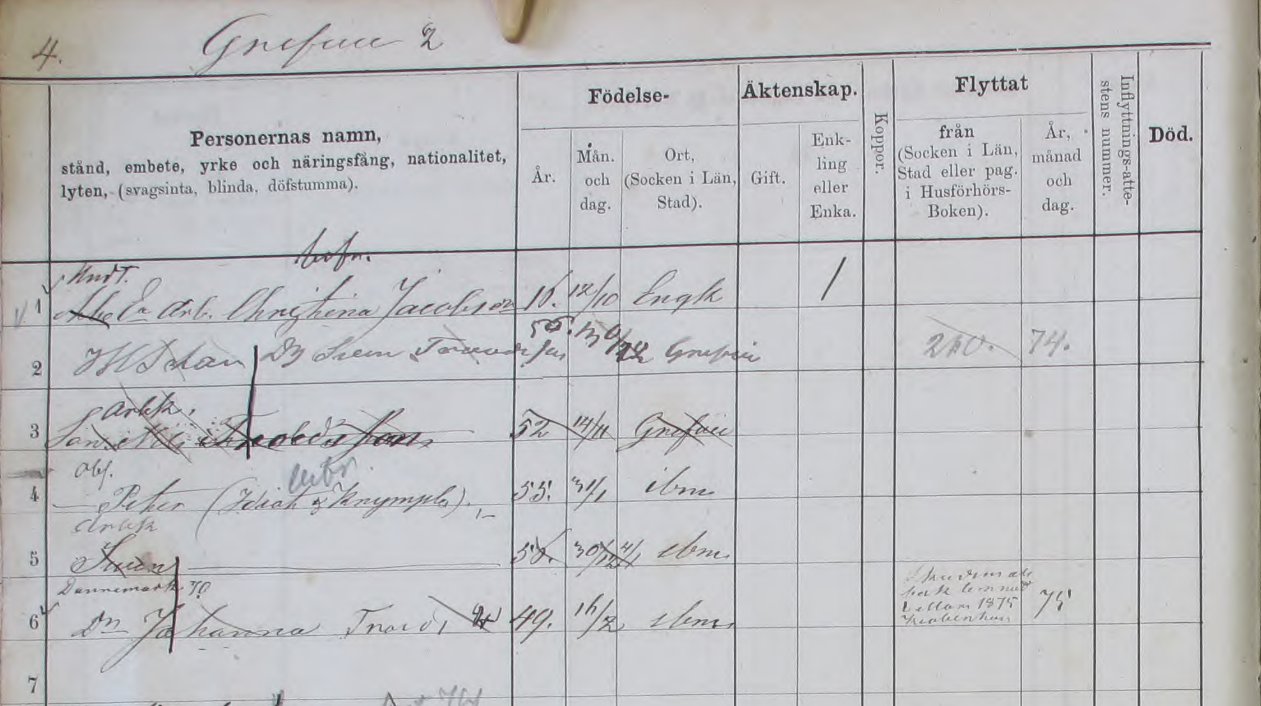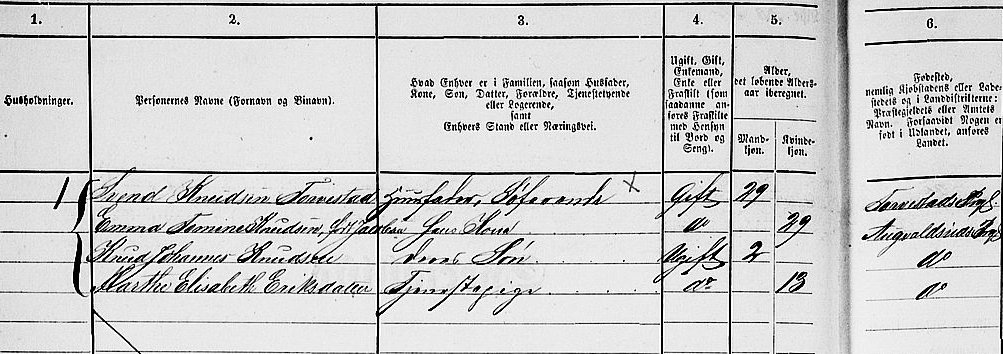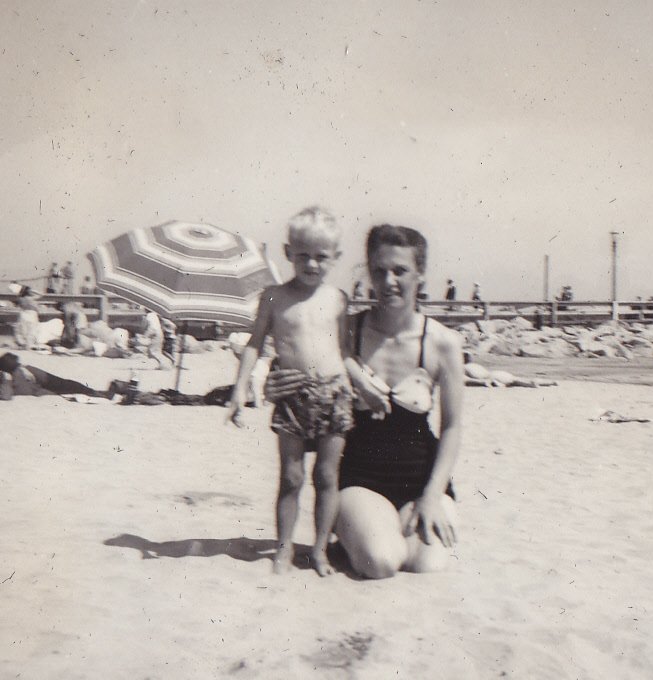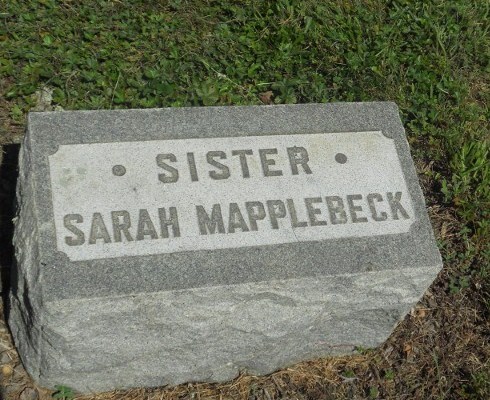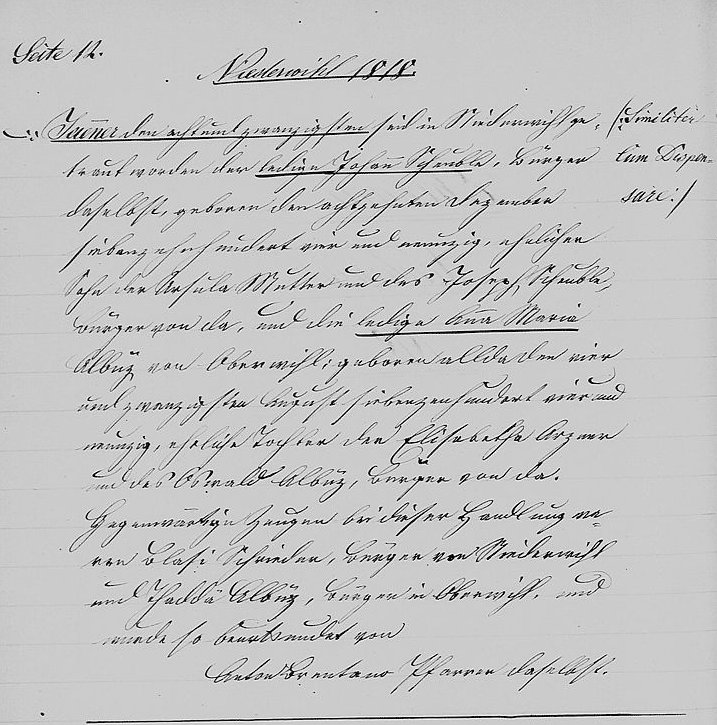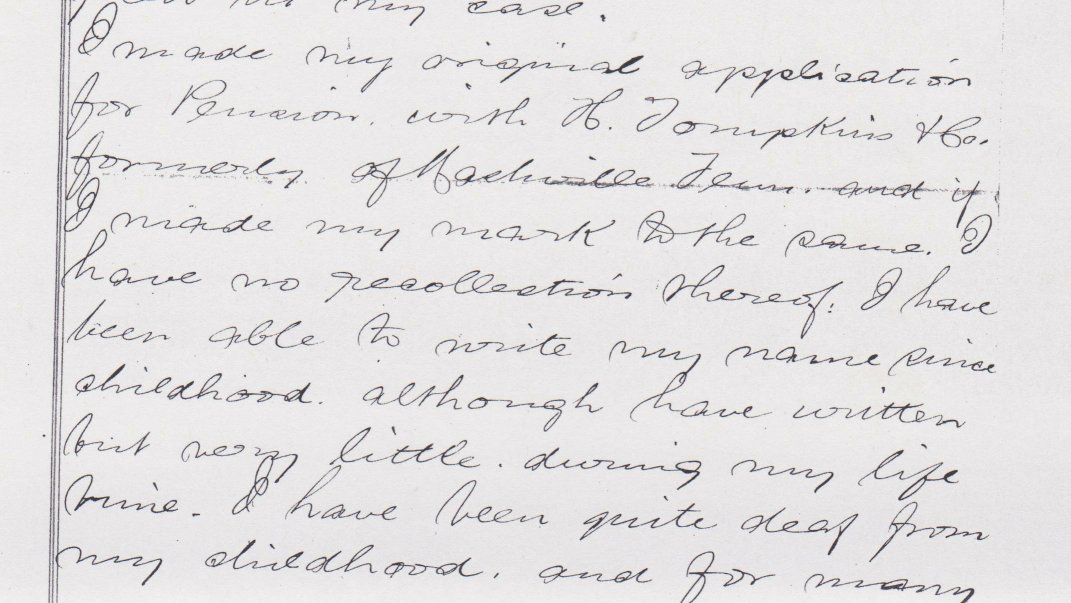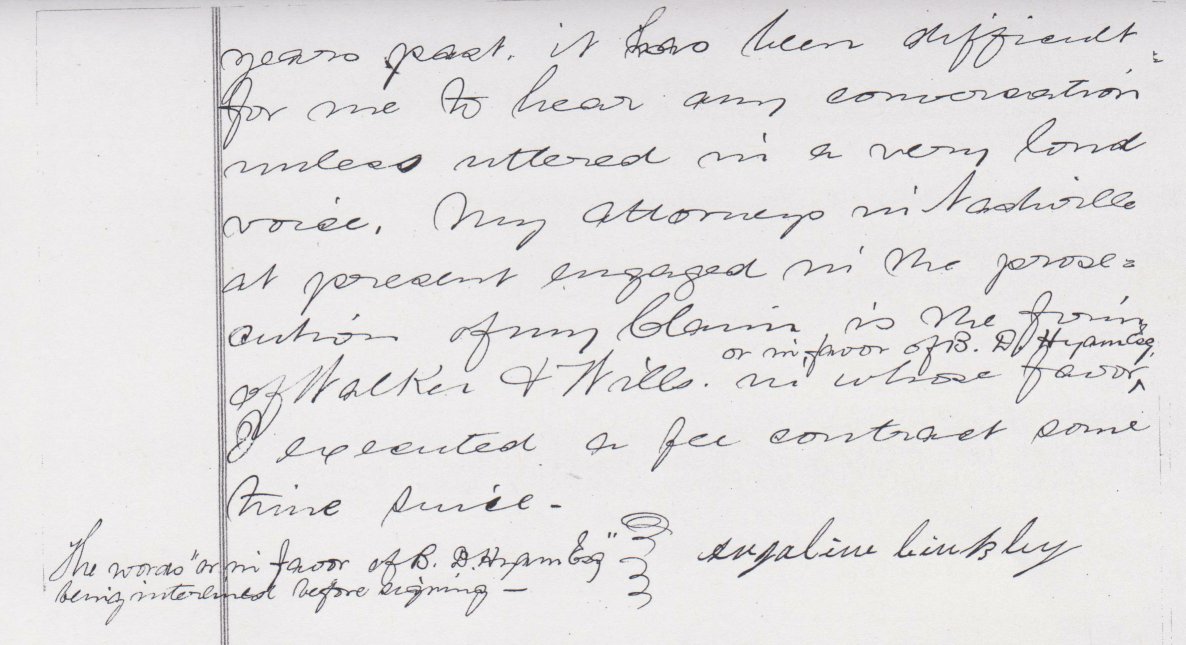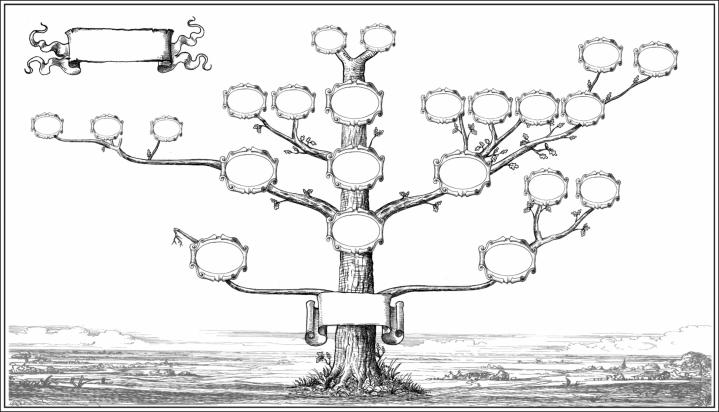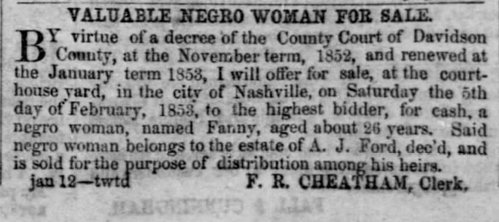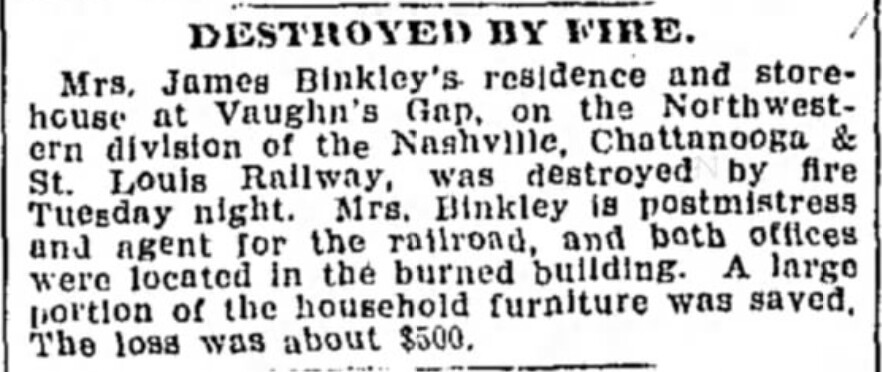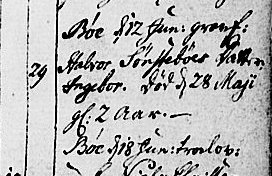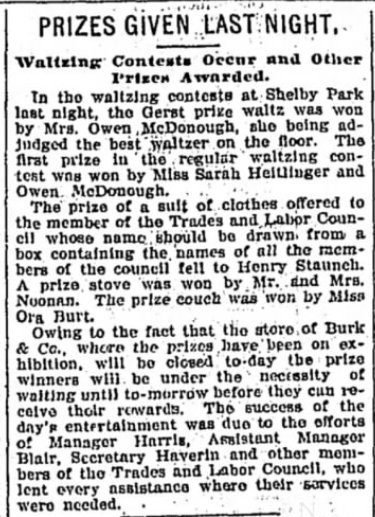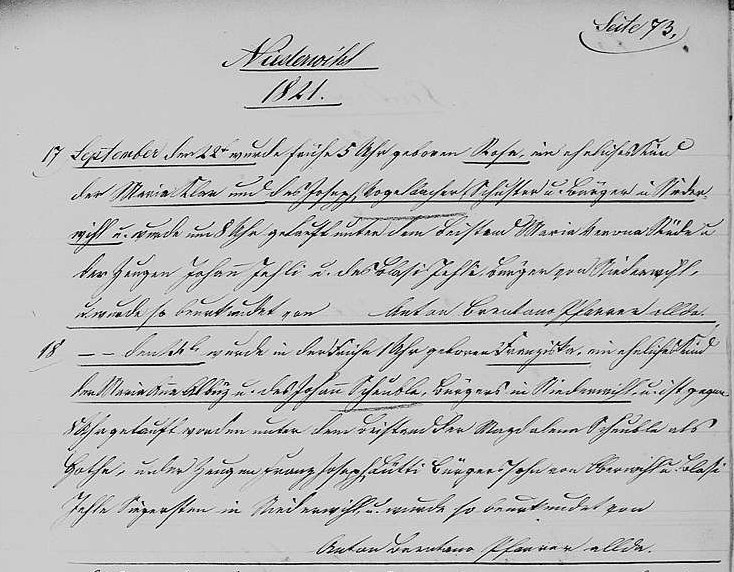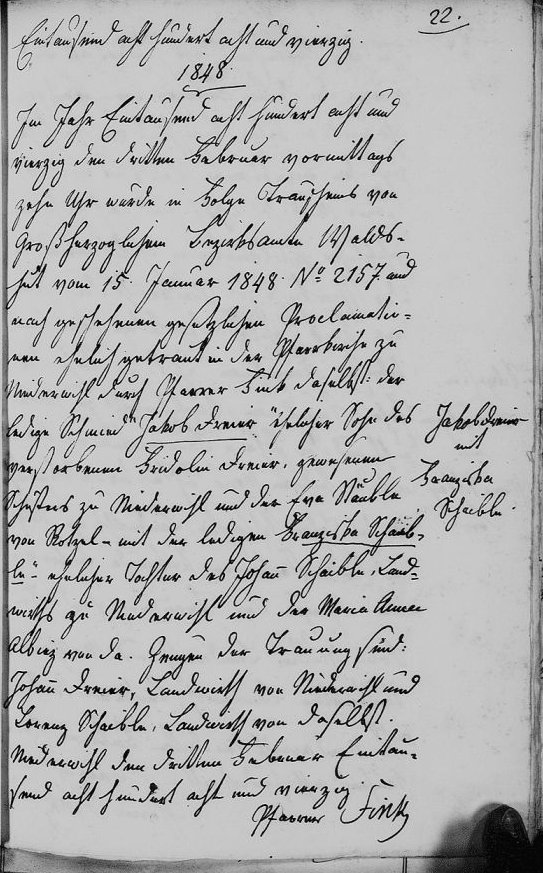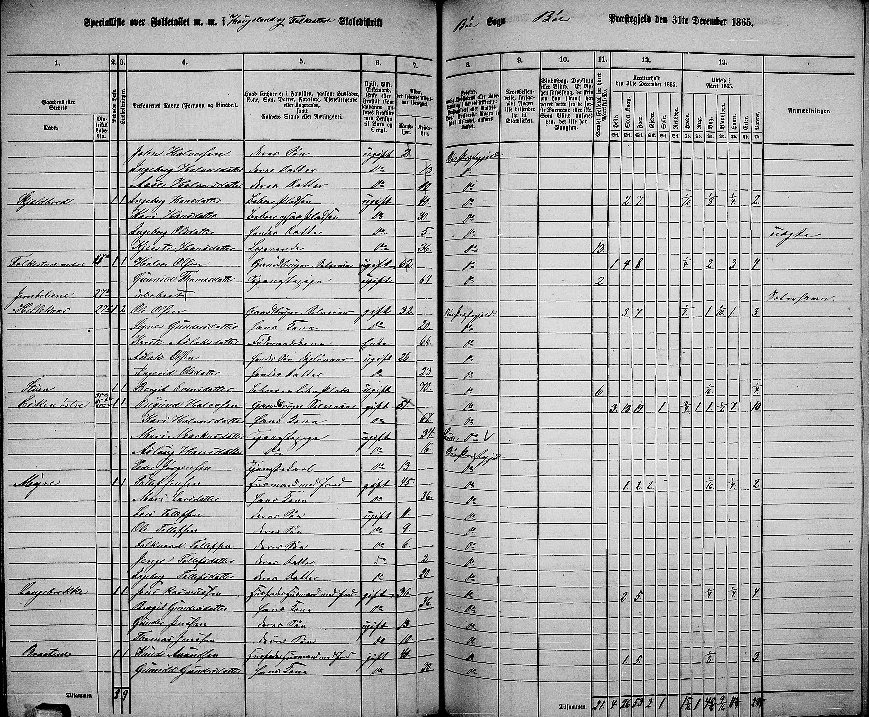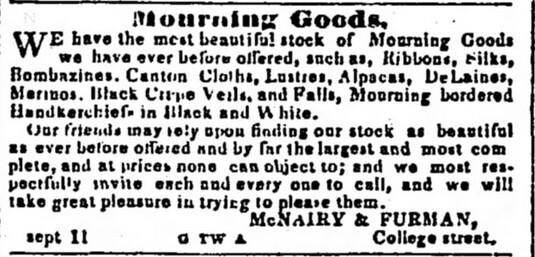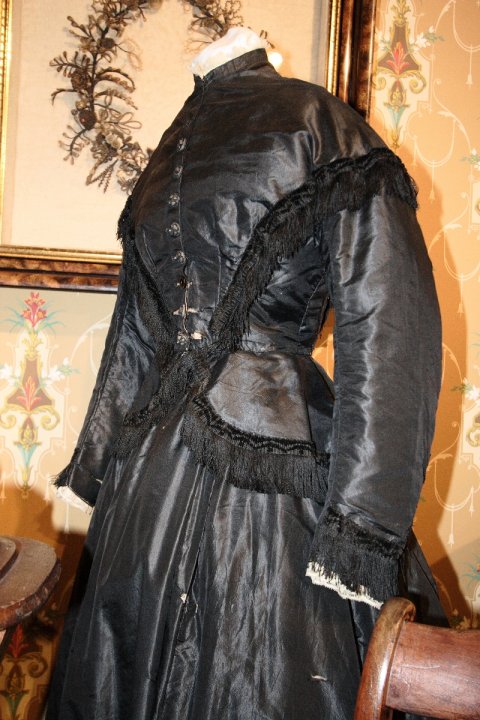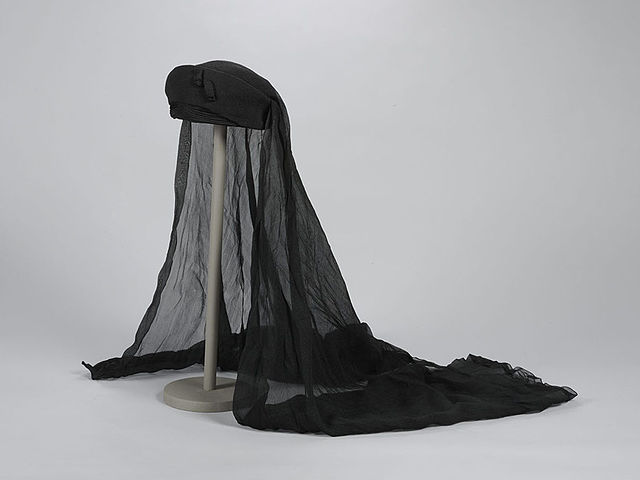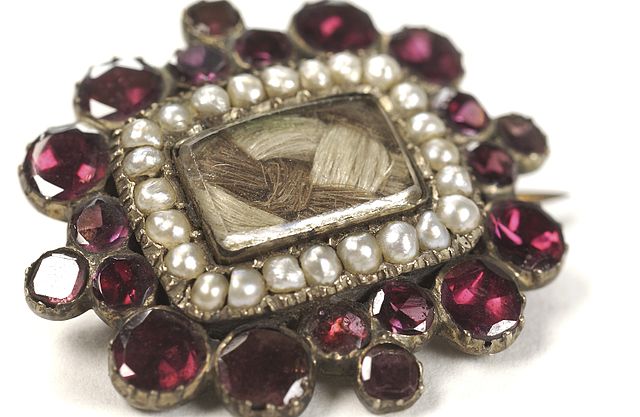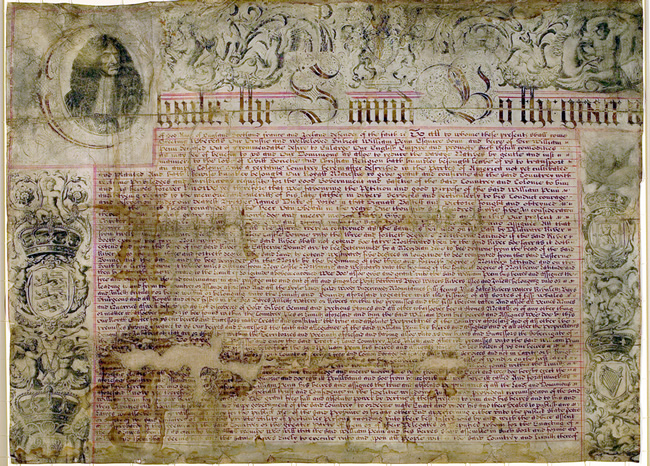The Eiffel Tower was designed to be the entrance arch to the 1889 World's Fair (Exposition Universelle), which was held in Paris, France from 6 May - 31 October 1889. On 31 March 1889, a dedication ceremony was held at the Eiffel Tower. Engineer Gustave Eiffel led members of the press and government officials, including French Prime Minister Pierre Tirard, up the tower. The elevators were not yet working, so they had to walk up 1710 steps. Most of the group did not go all the way to the top; among those that did were structural engineer Émile Nouguier and reporters from the French newspapers Le Figaro and Le Monde illustré. When they reached the top, Eiffel raised the French flag. At the time of the inauguration, the Eiffel Tower was the world's tallest building. It is still the tallest building in Paris.
When I flew back home from Germany in January 2005, I had a one-day layover in Paris. I had the chance to do a little sightseeing, and I visited the Eiffel Tower.
References
Eiffel Tower
Eiffel Tower opens
Exposition Universelle (1889)
History of the Eiffel Tower
Covering genealogy, family history, historical events and places, and anything else related!
Thursday, March 31, 2016
Wednesday, March 30, 2016
Wednesday's Child: Claus Halvorsen Sønstebø
My 5th-great-grandparents Halvor Eriksen Sønstebø and Kari Jorgensdatter Grave became the parents of a son, Claus, on 6 May 1792 in Bø, Telemark, Norway.
Telemark county, Bø, Parish register (official) nr. 5 (1785-1815), Chronological list 1792, page 59. http://www.arkivverket.no/URN:NBN:no-a1450-kb20061208060249.jpg
Claus died in March 1798 (I think the record says that he died on the 7th) in Bø, two months before his sixth birthday.
Telemark county, Bø, Parish register (official) nr. 5 (1785-1815), Chronological list 1798, page 112. http://www.arkivverket.no/URN:NBN:no-a1450-kb20061208060276.jpg
Telemark county, Bø, Parish register (official) nr. 5 (1785-1815), Chronological list 1792, page 59. http://www.arkivverket.no/URN:NBN:no-a1450-kb20061208060249.jpg
Claus died in March 1798 (I think the record says that he died on the 7th) in Bø, two months before his sixth birthday.
Telemark county, Bø, Parish register (official) nr. 5 (1785-1815), Chronological list 1798, page 112. http://www.arkivverket.no/URN:NBN:no-a1450-kb20061208060276.jpg
Tuesday, March 29, 2016
Knights of Columbus Founder's Day
March 29 is Knights of Columbus Founder's Day. On 2 October 1881, Father Michael J. McGivney, the assistant pastor of St. Mary's Church in New Haven, Connecticut, gathered a group of men from St. Mary's Parish and and proposed that they establish a Catholic fraternal benefits society. The first meeting of the Knights of Columbus took place on 6 February 1882. The Order was officially incorporated on 29 March 1882.
My great-grandfather John Schneider was a member of the Knights of Columbus, Lafayette Council, No. 1940 in St. Louis, Missouri. Lafayette Council No. 1940 was founded in March 1919. Rev. John F. Stevens, the pastor of Saints Peter and Paul Catholic Church, was one of the founders. John Schneider was also a member of Saints Peter and Paul Catholic Church.
References
Biographies S - St. Louis County, Missouri Genealogy Trails
Founder's Day - March 29
History | Knights of Columbus
Knights of Columbus
My great-grandfather John Schneider was a member of the Knights of Columbus, Lafayette Council, No. 1940 in St. Louis, Missouri. Lafayette Council No. 1940 was founded in March 1919. Rev. John F. Stevens, the pastor of Saints Peter and Paul Catholic Church, was one of the founders. John Schneider was also a member of Saints Peter and Paul Catholic Church.
St. Louis Post-Dispatch, 14 June 1955, page 5C
St. Louis Post-Dispatch, 16 November 1919, page 9
References
Biographies S - St. Louis County, Missouri Genealogy Trails
Founder's Day - March 29
History | Knights of Columbus
Knights of Columbus
Monday, March 28, 2016
Matrilineal Monday: Elisabeth Arzner
My 5th-great-grandmother Elisabeth Arzner is my earliest known ancestor in my direct maternal line. She was born about 1758. On 26 April 1787, she married Oswald Altbuez (or Albiez), a widower from Oberwihl, Waldshut, Baden, Germany. Oswald and his first wife Maria Elisabeth Lüttin had six children: Oswald (born 3 September 1774), Marzell (born 4 January 1777, died 15 January 1777), Regina (born 11 January 1778), Cornelius (born 13 September 1780), Elisabeth (born 6 November 1782), Thaddaeus (born 5 July 1784), and Fridolin (born 7 January 1787). Maria Elisabeth had died on 30 January 1787. Elisabeth gained an instant family when she married Oswald.
On 20 October 1787, Elisabeth's stepson Oswald died at age 13. But just after Christmas, there was a happier event; Elisabeth gave birth to her first child, a daughter named Ottilia, on 28 December 1787. More sad times followed a month later, when Elisabeth's stepson Fridolin died on 19 January 1788, less than a month after his first birthday. Elisabeth gave birth to her second child and first son, Anton, on 11 June 1789.
Elisabeth's next two children died young. Katharina was born on 2 March 1791 and died on 18 March 1792. Oswald was born on 10 June 1793 and died just one day later, on 11 June 1793.
Elisabeth gave birth to Maria Clara on 17 August 1794, and gave birth to my 4th-great-grandmother Maria Anna on 2 July 1796. She then had two more daughters that died young: Rosa (born 21 May 1799, died 14 December 1799) and Agatha (born 18 January 1801, died 21 January 1804). Her last child, Johann, was born on 11 July 1803.
Elisabeth's husband Oswald died on 13 April 1805. Elisabeth still had young children to take care of when she became a widow. Other than her children, I have not yet identified any of Elisabeth's relatives. I hope she had family support at this difficult time. Perhaps her older children and stepchildren helped.
Elisabeth died in Oberwihl on 26 September 1815.
Death record, Elisabeth Arzner, 26 September 1815. Staatsarchiv Freiburg L 10 Nr. 5794, Bilder 22-23. Permalink: http://www.landesarchiv-bw.de/plink/?f=5-498395-22, http://www.landesarchiv-bw.de/plink/?f=5-498395-23. Standesbücher / 1810-1870 > Waldshut; Amtsgericht > Oberwihl, Görwihl WT; Katholische Gemeinde: Sterbebuch 1810-1869 / 1810-1869.
On 20 October 1787, Elisabeth's stepson Oswald died at age 13. But just after Christmas, there was a happier event; Elisabeth gave birth to her first child, a daughter named Ottilia, on 28 December 1787. More sad times followed a month later, when Elisabeth's stepson Fridolin died on 19 January 1788, less than a month after his first birthday. Elisabeth gave birth to her second child and first son, Anton, on 11 June 1789.
Elisabeth's next two children died young. Katharina was born on 2 March 1791 and died on 18 March 1792. Oswald was born on 10 June 1793 and died just one day later, on 11 June 1793.
Elisabeth gave birth to Maria Clara on 17 August 1794, and gave birth to my 4th-great-grandmother Maria Anna on 2 July 1796. She then had two more daughters that died young: Rosa (born 21 May 1799, died 14 December 1799) and Agatha (born 18 January 1801, died 21 January 1804). Her last child, Johann, was born on 11 July 1803.
Elisabeth's husband Oswald died on 13 April 1805. Elisabeth still had young children to take care of when she became a widow. Other than her children, I have not yet identified any of Elisabeth's relatives. I hope she had family support at this difficult time. Perhaps her older children and stepchildren helped.
Elisabeth died in Oberwihl on 26 September 1815.
Death record, Elisabeth Arzner, 26 September 1815. Staatsarchiv Freiburg L 10 Nr. 5794, Bilder 22-23. Permalink: http://www.landesarchiv-bw.de/plink/?f=5-498395-22, http://www.landesarchiv-bw.de/plink/?f=5-498395-23. Standesbücher / 1810-1870 > Waldshut; Amtsgericht > Oberwihl, Görwihl WT; Katholische Gemeinde: Sterbebuch 1810-1869 / 1810-1869.
Sunday, March 27, 2016
Saturday, March 26, 2016
Surname Saturday: Graham
According to the Internet Surname Database, the surname Graham comes from the town of Grantham in Lincolnshire, England. It was recorded in the Domesday Book of 1086. When Sir William de Graham traveled to Scotland with King David I, he founded Clan Graham.
My known Graham ancestors are:
Great-grandmother: Kathleen Graham
born 31 October 1879, probably in Quebec, Canada, but possibly in Chicago, Illinois
married John Boe
died 17 November 1967, Brentwood, St. Louis County, Missouri
2nd-great-grandfather: James Graham
born about 1854 in the United States
married Catherine Elizabeth Winters
Friday, March 25, 2016
Good Friday
St. Louis Republic, 6 April 1903, page 10
My Schneider and Gersbacher ancestors lived in St. Louis and were Catholic. They probably attended the services described above at Saints Peter and Paul Catholic Church. On Good Friday, they would have been at the Mass of the Presanctified and the Adoration of the Cross, and stopped at the Stations of the Cross.
Thursday, March 24, 2016
Five-Generation Birthplace Pedigree Chart
J. Paul Hawthorne created a five-generation pedigree chart showing ancestors' birthplaces. I filled in the chart with my ancestors' information. I went with Canada for my maternal grandfather's mother's birthplace, since it is the one that I believe is most likely to be correct, but Illinois is a possibility too. I wish I could list a birthplace more specific than United States for her father, but he is my biggest brick wall. If my theory is correct, his birthplace is New York, but I do not yet have sufficient evidence.
Wednesday, March 23, 2016
Wednesday's Child: Marken and Asber Halvorsdatter Sønstebø
On 27 July 1807 in Bø, Telemark, Norway, my 5th-great-grandparents Halvor Eriksen Sønstebø and Kari Jorgensdatter Grave became the parents of twin daughters, Marken and Asber.
Telemark county, Bø, Parish register (official) nr. 5 (1785-1815), Chronological list 1807, page 207. http://www.arkivverket.no/URN:NBN:no-a1450-kb20061208060323.jpg
Asber died on 24 April 1809.
Telemark county, Bø, Parish register (official) nr. 5 (1785-1815), Chronological list 1809, page 223. http://www.arkivverket.no/URN:NBN:no-a1450-kb20061208060331.jpg
Marken died on 27 August 1809.
Telemark county, Bø, Parish register (official) nr. 5 (1785-1815), Chronological list 1809, page 226. http://www.arkivverket.no/URN:NBN:no-a1450-kb20061208060332.jpg
Telemark county, Bø, Parish register (official) nr. 5 (1785-1815), Chronological list 1807, page 207. http://www.arkivverket.no/URN:NBN:no-a1450-kb20061208060323.jpg
Asber died on 24 April 1809.
Telemark county, Bø, Parish register (official) nr. 5 (1785-1815), Chronological list 1809, page 223. http://www.arkivverket.no/URN:NBN:no-a1450-kb20061208060331.jpg
Marken died on 27 August 1809.
Telemark county, Bø, Parish register (official) nr. 5 (1785-1815), Chronological list 1809, page 226. http://www.arkivverket.no/URN:NBN:no-a1450-kb20061208060332.jpg
Tuesday, March 22, 2016
Travel Tuesday: Visiting Relatives in Indiana
Vidette-Messenger, 29 May 1931, page 4
On 27 May 1931, Marie Louise (Borg) Dahlquist, her daughter Juliet (Dahlquist) Gilbert, her son-in-law Fritz Arthur Gilbert, and her granddaughters Lois and Joyce Gilbert traveled from Chicago, Illinois to Porter County, Indiana. They visited Marie's sister Clara Matilda (Borg) Samuelson and brother-in-law Nels A. Samuelson. They also visited Marie's brother Alfred Borg and sister-in-law Emily (Chellberg) Borg.
Monday, March 21, 2016
World Down Syndrome Day
March 21 is World Down Syndrome Day. Since 2005, events have been held on this day to raise awareness of Down Syndrome and to show how people with Down Syndrome can play active roles in their communities.
My 2nd-great-grandfather's brother Petter Troedsson was listed as idiot krympling [idiot cripple] in Swedish household examination records. Their mother Christina Jacobsdotter was 38 years old when Petter was born on 31 January 1855 in Grevie, Skåne, Sweden. I suspect that Petter may have had Down Syndrome.
Petter died on 27 October 1908 in Grevie, Skåne, Sweden. He was 53 years old and a pauper in the Grevie workhouse. The cause of death was dropsy.
Peter Troedsson death record, 27 October 1908. Grevie FI:3 (1895-1943) Image 580 / page 53 (AID: v516961.b580.s53, NAD: SE/LLA/13113).
My 2nd-great-grandfather's brother Petter Troedsson was listed as idiot krympling [idiot cripple] in Swedish household examination records. Their mother Christina Jacobsdotter was 38 years old when Petter was born on 31 January 1855 in Grevie, Skåne, Sweden. I suspect that Petter may have had Down Syndrome.
Grevie AI:14 (1870-1876) Image 80 / page 4 (AID: v99265a.b80.s4, NAD: SE/LLA/13113).
Petter died on 27 October 1908 in Grevie, Skåne, Sweden. He was 53 years old and a pauper in the Grevie workhouse. The cause of death was dropsy.
Peter Troedsson death record, 27 October 1908. Grevie FI:3 (1895-1943) Image 580 / page 53 (AID: v516961.b580.s53, NAD: SE/LLA/13113).
Sunday, March 20, 2016
Census Sunday: Living with Cousin's Family in Haugesund, Rogaland, Norway
After her father died in 1865, my 2nd-great-grandmother Marthe Elisabeth Eriksdatter (Erickson after immigrating to the United States) and her siblings went to live in different households. Their mother had died in 1856. When the 1865 Norway Census was enumerated, Marthe was living with her first cousin Svend Knudsen Torvestad, his wife Emma Tomine Knudsen (née Jacobsen), and their son Knud Johannes Knudsen in Haugesund, Rogaland, Norway. Marthe's occupation was Tjenestepige (servant girl). Sven's occupation was Søfarende (sailor).
Rogaland fylke, Torvastad prestegjeld, Haugesund ladested, Statlig folketelling [Rogaland County, Torvastad parish, Haugesund seaport, Government census ] 275 (RA/S-2231/E), 1865-1865, oppb: Riksarkivet. http://www.arkivverket.no/URN:NBN:no-a1450-ft20090803640064.jpg
Rogaland fylke, Torvastad prestegjeld, Haugesund ladested, Statlig folketelling [Rogaland County, Torvastad parish, Haugesund seaport, Government census ] 275 (RA/S-2231/E), 1865-1865, oppb: Riksarkivet. http://www.arkivverket.no/URN:NBN:no-a1450-ft20090803640064.jpg
Labels:
Census Sunday,
Erickson,
Haugesund,
Norway,
Rogaland
Saturday, March 19, 2016
Surname Saturday: Nevins
According to the Internet Surname Database, the surname Nevins is of Gaelic origin and is found in both Scotland and Ireland. Variant forms of the name are Nevin, Niven, McNiven, McNevin, and Nevinson. The surname may originate from the Gaelic personal name Naoimhin ("little saint"). It could also come from the name MacCnaimhin. Cnahm means "bone."
My 3rd-great-grandmother Mary Nevins was born in Ireland about 1835-1837. She married William Dow Gatlin in Davidson County, Tennessee on 3 January 1855. Mary died on 9 September 1888. I have not yet been able to find out more about her ancestry.
Friday, March 18, 2016
Thursday, March 17, 2016
The Green Chicago River
Chicago River dyed green for St. Patrick's Day celebration. 12 March 2005. Photo by Knowledge Seeker (Own work) [Public domain]. Available from Wikimedia Commons.
Since 1961, the Chicago River has been dyed green for St. Patrick's Day by the Chicago Journeyman Plumbers. Stephen Bailey noticed that a plumber's white coveralls had turned green and asked him how they got that way. It turned out that the dye used to detect leaks turned green.
Source: Dyeing of the River: Modern Day Miracle
Since 1961, the Chicago River has been dyed green for St. Patrick's Day by the Chicago Journeyman Plumbers. Stephen Bailey noticed that a plumber's white coveralls had turned green and asked him how they got that way. It turned out that the dye used to detect leaks turned green.
Source: Dyeing of the River: Modern Day Miracle
Wednesday, March 16, 2016
Happy Birthday, Grandma Boe!
I am thinking of my maternal grandmother Margaret Ann (Schneider) Boe on her birthday. She would have been 105 today.
Margaret Ann (Schneider) Boe and her son, my uncle Dobby, Long Beach, California, 1949
Margaret Ann (Schneider) Boe and her son, my uncle Dobby, Long Beach, California, 1949
Tuesday, March 15, 2016
Tombstone Tuesday: Sarah Mapplebeck
Photo by Mary Ann Missimer-Moore - Find A Grave contributor
Sarah Mappleback was born about 1854 in Ontario, Canada. She was the daughter of George Mapplebeck and his second wife Jane, and the older sister of James Mapplebeck, my great-grandmother's stepfather/adoptive father. She worked as a fur finisher. Sarah, her mother, and her brother George moved to Camden, New Jersey in the 1890s. By 1910, Sarah had moved to Glassboro, Gloucester County, New Jersey. She died on 21 October 1920 and was buried in Manahath Cemetery in Glassboro.
Monday, March 14, 2016
Matrilineal Monday: Maria Anna Albiez
My 4th-great-grandmother Maria Anna Albiez (also known as Anna Maria Albiez) was born on 2 July 1796 in Oberwihl, Waldshut, Baden, Germany. She was the daughter of Oswald Albiez (or Altbuez) and Elisabeth Arzner.
On 6 August 1848, when Maria Anna was only nine years old, her father Oswald died. Her mother Elisabeth died on 26 September 1815.
On 21 January 1818, Maria Anna married Johann Schäuble (or Scheuble) in Niederwihl, Waldshut, Baden, Germany.
Marriage record, Johann Schäuble and Anna Maria Albiez, 21 January 1818. Staatsarchiv Freiburg L 10 Nr. 5776, Bild 16. Permalink: http://www.landesarchiv-bw.de/plink/?f=5-498377-16. Standesbücher / 1810-1870 > Waldshut; Amtsgericht > Niederwihl, Görwihl WT; Katholische Gemeinde: Heiratsbuch 1810-1869 / 1810-1869.
Johann and Maria Anna had the following children:
Magdalena Schäuble, born 26 February 1819
Theres Schäuble, born 3 March 1820
Franziska Schäuble (my 3rd-great-grandmother), born 24 September 1821
Agatha Schäuble, born 24 January 1824
Franz Joseph Schäuble, born 13 December 1825
Katharina Schäuble, born 21 March 1847
Fridolina Schäuble, born 4 March 1829
Karl Schäuble, born 28 March 1831, died 30 March 1831
Sophia Schäuble, born 15 May 1832
Sekunda Schäuble, born 31 December 1833
Maria Anna died on 20 March 1847 in Niederwihl.
Death record, Maria Anna Albiez, 20 March 1847. Staatsarchiv Freiburg L 10 Nr. 5777, Bild 124. Permalink: http://www.landesarchiv-bw.de/plink/?f=5-498378-124. Standesbücher / 1810-1870 > Waldshut; Amtsgericht >Niederwihl, Görwihl WT; Katholische Gemeinde: Sterbebuch 1810-1869 / 1810-1869.
On 6 August 1848, when Maria Anna was only nine years old, her father Oswald died. Her mother Elisabeth died on 26 September 1815.
On 21 January 1818, Maria Anna married Johann Schäuble (or Scheuble) in Niederwihl, Waldshut, Baden, Germany.
Marriage record, Johann Schäuble and Anna Maria Albiez, 21 January 1818. Staatsarchiv Freiburg L 10 Nr. 5776, Bild 16. Permalink: http://www.landesarchiv-bw.de/plink/?f=5-498377-16. Standesbücher / 1810-1870 > Waldshut; Amtsgericht > Niederwihl, Görwihl WT; Katholische Gemeinde: Heiratsbuch 1810-1869 / 1810-1869.
Johann and Maria Anna had the following children:
Magdalena Schäuble, born 26 February 1819
Theres Schäuble, born 3 March 1820
Franziska Schäuble (my 3rd-great-grandmother), born 24 September 1821
Agatha Schäuble, born 24 January 1824
Franz Joseph Schäuble, born 13 December 1825
Katharina Schäuble, born 21 March 1847
Fridolina Schäuble, born 4 March 1829
Karl Schäuble, born 28 March 1831, died 30 March 1831
Sophia Schäuble, born 15 May 1832
Sekunda Schäuble, born 31 December 1833
Maria Anna died on 20 March 1847 in Niederwihl.
Death record, Maria Anna Albiez, 20 March 1847. Staatsarchiv Freiburg L 10 Nr. 5777, Bild 124. Permalink: http://www.landesarchiv-bw.de/plink/?f=5-498378-124. Standesbücher / 1810-1870 > Waldshut; Amtsgericht >Niederwihl, Görwihl WT; Katholische Gemeinde: Sterbebuch 1810-1869 / 1810-1869.
Sunday, March 13, 2016
Deaf History Month
Deaf History Month begins on March 13 and lasts until April 15. These dates were chosen to highlight three important events in deaf history:
13 March 1988: Irving King Jordan became the first deaf president of Gallaudet University after students protested the appointment of a hearing president
8 April 1864: President Abraham Lincoln signed the charter for the Columbia Institution for the Instruction of the Deaf and Dumb and Blind (now Gallaudet University)
15 April 1817: the first permanent school for the deaf in the United States, the American School for the Deaf, was founded by Thomas Hopkins Gallaudet, Dr. Mason Cogswell, and Laurent Clerc
My 3rd-great-grandmother Angeline (Mayo) Binkley was hearing-impaired. In her Civil War widow's pension application, she stated that she had been "quite deaf" since her childhood and that it was difficult for her to hear conversations unless the words were spoken very loudly.
Angeline Binkley, widow's pension application no. 120,126, certificate no. 166,029; service of Davidson Binkley (Pvt., Co. G, 128th Ill. Inf., Civil War); Case Files of Approved Pension Applications..., 1861-1934; Civil War and Later Pension Files; Department of Veterans Affairs, Record Group 15; National Archives, Washington, D.C.
Statement of Angeline Binkley. Angeline Binkley, widow's pension application no. 120,126, certificate no. 166,029; service of Davidson Binkley (Pvt., Co. G, 128th Ill. Inf., Civil War); Case Files of Approved Pension Applications..., 1861-1934; Civil War and Later Pension Files; Department of Veterans Affairs, Record Group 15; National Archives, Washington, D.C.
References
American School for the Deaf
Celebrate National Deaf History Month - Beginning March 13
Gallaudet University and President Abraham Lincoln
I. King Jordan
Observing Deaf History Month
13 March 1988: Irving King Jordan became the first deaf president of Gallaudet University after students protested the appointment of a hearing president
8 April 1864: President Abraham Lincoln signed the charter for the Columbia Institution for the Instruction of the Deaf and Dumb and Blind (now Gallaudet University)
15 April 1817: the first permanent school for the deaf in the United States, the American School for the Deaf, was founded by Thomas Hopkins Gallaudet, Dr. Mason Cogswell, and Laurent Clerc
My 3rd-great-grandmother Angeline (Mayo) Binkley was hearing-impaired. In her Civil War widow's pension application, she stated that she had been "quite deaf" since her childhood and that it was difficult for her to hear conversations unless the words were spoken very loudly.
Angeline Binkley, widow's pension application no. 120,126, certificate no. 166,029; service of Davidson Binkley (Pvt., Co. G, 128th Ill. Inf., Civil War); Case Files of Approved Pension Applications..., 1861-1934; Civil War and Later Pension Files; Department of Veterans Affairs, Record Group 15; National Archives, Washington, D.C.
Statement of Angeline Binkley. Angeline Binkley, widow's pension application no. 120,126, certificate no. 166,029; service of Davidson Binkley (Pvt., Co. G, 128th Ill. Inf., Civil War); Case Files of Approved Pension Applications..., 1861-1934; Civil War and Later Pension Files; Department of Veterans Affairs, Record Group 15; National Archives, Washington, D.C.
References
American School for the Deaf
Celebrate National Deaf History Month - Beginning March 13
Gallaudet University and President Abraham Lincoln
I. King Jordan
Observing Deaf History Month
Saturday, March 12, 2016
Genealogy Day
Family tree. By Tomasz Steifer [GFDL (http://www.gnu.org/copyleft/fdl.html), CC-BY-SA-3.0 (http://creativecommons.org/licenses/by-sa/3.0/) or CC BY 2.5 (http://creativecommons.org/licenses/by/2.5)]. Available from Wikimedia Commons.
The Saturday of the first full week in March is Genealogy Day. It is part of Celebrate Your Name Week, which was created in 1997 by Jerry Hill. It is a day to learn about your ancestors.
For many of us, every day is Genealogy Day, but it's nice that there is a designated day for genealogy!
References
Celebrate Your Name Week
Genealogy Day
The Saturday of the first full week in March is Genealogy Day. It is part of Celebrate Your Name Week, which was created in 1997 by Jerry Hill. It is a day to learn about your ancestors.
For many of us, every day is Genealogy Day, but it's nice that there is a designated day for genealogy!
References
Celebrate Your Name Week
Genealogy Day
Friday, March 11, 2016
Friend of Friends Friday: Fanny, Slave of A. J. Ford
Nashville Union, 20 January 1853, page 3
VALUABLE NEGRO WOMAN FOR SALE.
BY virtue of a decree of the County Court of Davidson County, at the November term, 1852, and renewed at the January term 1853, I will offer for sale, at the courthouse yard, in the city of Nashville, on Saturday the 5th day of February, 1853, to the highest bidder, for cash, a negro woman, named Fanny, age about 26 years. Said negro woman belongs to the estate of A. J. Ford, dec'd, and is sold for the purpose of distribution among his heirs.jan12t––wtd F.R. CHEATHAM, Clerk.
Thursday, March 10, 2016
Binkley Home and Storehouse Destroyed By Fire
Nashville American, 6 June 1901, page 2
On 4 June 1901, a fire broke out in Vaughn's Gap, Davidson County, Tennessee, at the home of Clementine Virginia (Leech) Binkley. The building also contained a post office and a ticket office for the Northwestern division of the Nashville, Chattanooga & St. Louis Railway. Clementine Virginia was the widow of James Rutherford Binkley, my 2nd-great-grandmother Anna Malvina (Binkley) Tarkington's brother. She worked as postmistress and ticket agent for the Nashville, Chattanooga & St. Louis Railway. She was also raising her two sons, James Banks Binkley and Burl Turner Binkley. At the time of the fire, James was sixteen and Burl was almost twelve.
Fortunately, much of the furniture was saved. She also had family living nearby, and they probably helped her and her sons through this difficult time. The 1900 U.S. Census shows that she was living near her mother-in-law Angeline (Mayo) Binkley; her sister-in-law Anna Malvina (Binkley) Tarkington; Malvina's children Viola, Gertrude, and Robert Tarkington; her brother Patrick Henry Leech; Henry's wife (and Malvina's daughter) Laura Belle (Tarkington) Leech; and their children John, Nina, and Henry. [Note that Virginia's son James B. Binkley's age is recorded incorrectly; perhaps the census taker wrote down that he was 17 and later misread the number as 7.]
1900 United States Census, Civil District 14, Davidson County, Tennessee, population schedule, enumeration district 130, sheet no. 11A. Ancestry.com. 1900 United States Federal Census [database on-line]. Provo, UT, USA: Ancestry.com Operations Inc, 2004.
Labels:
Binkley,
Leech,
Mayo,
Tarkington,
Tennessee,
Vaughn's Gap
Wednesday, March 9, 2016
Wednesday's Child: Ingebor Halvorsdatter Sønstebø
Ingebor Halvorsdatter Sønstebø was born on 29 July 1794 in Bø, Telemark, Norway. She was the daughter of my 5th-great-grandparents Halvor Eriksen Sønstebø and Kari Jorgensdatter Grave.
Telemark county, Bø, Parish register (official) nr. 5 (1785-1815), Chronological list 1794, page 79. http://www.arkivverket.no/URN:NBN:no-a1450-kb20061208060259.jpg
Ingebor died less than two years later, on 28 May 1796.
Telemark county, Bø, Parish register (official) nr. 5 (1785-1815), Chronological list 1796, page 95. http://www.arkivverket.no/URN:NBN:no-a1450-kb20061208060267.jpg
Telemark county, Bø, Parish register (official) nr. 5 (1785-1815), Chronological list 1794, page 79. http://www.arkivverket.no/URN:NBN:no-a1450-kb20061208060259.jpg
Ingebor died less than two years later, on 28 May 1796.
Telemark county, Bø, Parish register (official) nr. 5 (1785-1815), Chronological list 1796, page 95. http://www.arkivverket.no/URN:NBN:no-a1450-kb20061208060267.jpg
Tuesday, March 8, 2016
Talented Tuesday: Nellie (Cox) McDonough
My 2nd-great-grandmother's half-sister Nellie (Cox) McDonough was a good waltzer. She won a prize in a waltzing contest at Shelby Park in East Nashville, Tennessee in 1899 for being the best waltzer on the floor. Her husband Owen McDonough also won a prize in the contest.
Nashville American, 5 September 1899, page 8
Monday, March 7, 2016
Matrilineal Monday: Franziska Schäuble
My 3rd-great-grandmother Franziska Schäuble was born on 24 September 1821 in Niederwihl, Waldshut, Baden, Germany. She was the daughter of Johann Schäuble (or Scheuble) and Maria Anna Albiez. Her father was a farmer (Landwirt), a cotton manufacturer (Baumwollfabrikant), and the proprietor of the Stag Inn (Hirschenwirt).
Birth record, Franziska Schäuble, 24 September 1821. Staatsarchiv Freiburg L 10 Nr. 5775, Bild 35. Permalink: http://www.landesarchiv-bw.de/plink/?f=5-498376-35. Standesbücher / 1810-1870 > Waldshut; Amtsgericht > Niederwihl, Görwihl WT; Katholische Gemeinde: Geburtenbuch 1810-1869.
On 24 February 1846, Franziska gave birth to my 2nd-great-grandmother Kunigunde Dreier. Kunigunde's father was Jakob Dreier, a blacksmith (Schmied).
Franziska lost two family members in 1847. Her mother Maria Anna Albiez died on 20 March 1847, and her younger sister Katharina Schäuble died on 28 November 1847 at age 20.
On 3 February 1848, almost two years after the birth of their daughter, Franziska and Jakob married in Niederwihl.
Marriage record, Jakob Dreier and Franziska Schäuble, 1848. Staatsarchiv Freiburg L 10 Nr. 5776, Bild 81. Permalink: http://www.landesarchiv-bw.de/plink/?f=5-498377-81. Standesbücher / 1810-1870 > Waldshut; Amtsgericht > Niederwihl, Görwihl WT; Katholische Gemeinde: Heiratsbuch 1810-1869.
A little more than 4 months after their marriage, on 17 June 1848, their daughter Magdalena was born. Sadly, Magdalena died on 25 February 1849, one day after Kunigunde's third birthday.
Franziska lost her one remaining parent in 1851; her father Johann Schäuble died on 26 February. Later that year, on 3 June, she gave birth to her daughter Sophie. She had another daughter, Agnes, on 10 September 1852.
In 1854, Franziska's youngest sister, Sekunda Schäuble, applied for permission to emigrate from Germany and settle in the United States.
Franziska and Jakob's only son, Julius, was born on 20 March 1855. Their last child, Emilie, was born on 19 November 1857. Emilie died on 5 July 1859.
Franziska lost three of her siblings in the 1860s. Her sister Sophia died on 23 June 1862, her sister Theres died on 11 April 1865, and her sister Agatha died on 17 April 1866.
Franziska experienced more losses in the 1870s. Her husband Jakob Dreier died on 18 September 1870, her son Julius Dreier died on 3 May 1874, and her sister Magdalena Schäuble died on 28 September 1876. But there were happier moments too, such as the birth of her grandchildren. Her daughter Kunigunde married Johann Gerspacher on 16 February 1871, and gave birth to five children in the 1870s: Friedrich/Fridolin, born 15 May 1871; Hermann, born 30 May 1873; Pauline, born 13 August 1876; Hermann, born 26 September 1877; and Joseph, born 8 May 1879. Sadly, both Hermanns died, the first on 24 August 1873, and the second on 18 December 1878. Kunigunde gave birth to one more child during Franziska's lifetime: daughter Augusta, born 29 January 1881.
Franziska died on 21 May 1882.
Birth record, Franziska Schäuble, 24 September 1821. Staatsarchiv Freiburg L 10 Nr. 5775, Bild 35. Permalink: http://www.landesarchiv-bw.de/plink/?f=5-498376-35. Standesbücher / 1810-1870 > Waldshut; Amtsgericht > Niederwihl, Görwihl WT; Katholische Gemeinde: Geburtenbuch 1810-1869.
On 24 February 1846, Franziska gave birth to my 2nd-great-grandmother Kunigunde Dreier. Kunigunde's father was Jakob Dreier, a blacksmith (Schmied).
Franziska lost two family members in 1847. Her mother Maria Anna Albiez died on 20 March 1847, and her younger sister Katharina Schäuble died on 28 November 1847 at age 20.
On 3 February 1848, almost two years after the birth of their daughter, Franziska and Jakob married in Niederwihl.
Marriage record, Jakob Dreier and Franziska Schäuble, 1848. Staatsarchiv Freiburg L 10 Nr. 5776, Bild 81. Permalink: http://www.landesarchiv-bw.de/plink/?f=5-498377-81. Standesbücher / 1810-1870 > Waldshut; Amtsgericht > Niederwihl, Görwihl WT; Katholische Gemeinde: Heiratsbuch 1810-1869.
A little more than 4 months after their marriage, on 17 June 1848, their daughter Magdalena was born. Sadly, Magdalena died on 25 February 1849, one day after Kunigunde's third birthday.
Franziska lost her one remaining parent in 1851; her father Johann Schäuble died on 26 February. Later that year, on 3 June, she gave birth to her daughter Sophie. She had another daughter, Agnes, on 10 September 1852.
In 1854, Franziska's youngest sister, Sekunda Schäuble, applied for permission to emigrate from Germany and settle in the United States.
Franziska and Jakob's only son, Julius, was born on 20 March 1855. Their last child, Emilie, was born on 19 November 1857. Emilie died on 5 July 1859.
Franziska lost three of her siblings in the 1860s. Her sister Sophia died on 23 June 1862, her sister Theres died on 11 April 1865, and her sister Agatha died on 17 April 1866.
Franziska experienced more losses in the 1870s. Her husband Jakob Dreier died on 18 September 1870, her son Julius Dreier died on 3 May 1874, and her sister Magdalena Schäuble died on 28 September 1876. But there were happier moments too, such as the birth of her grandchildren. Her daughter Kunigunde married Johann Gerspacher on 16 February 1871, and gave birth to five children in the 1870s: Friedrich/Fridolin, born 15 May 1871; Hermann, born 30 May 1873; Pauline, born 13 August 1876; Hermann, born 26 September 1877; and Joseph, born 8 May 1879. Sadly, both Hermanns died, the first on 24 August 1873, and the second on 18 December 1878. Kunigunde gave birth to one more child during Franziska's lifetime: daughter Augusta, born 29 January 1881.
Franziska died on 21 May 1882.
Sunday, March 6, 2016
Census Sunday: Kari and Her Younger Husband
My 4th-great-grandmother Kari Halvorsdatter Sønstebø's second husband was a much younger man. Ougund (or Ougun) Halvorsen was sixteen years her junior.
In 1865, eighteen years after their marriage, the couple lived on the Eiken østre farm in Bø, Telemark, Norway. Ougund was a farmer, and he owned his farm. Kari's grandson Peder Jorgensen lived with them; his occupation was Tjenestekarl (male servant). Two female servants, Mari Markusdatter and Aslaug Hansdatter, also lived with them.
Telemark fylke, Bø prestegjeld, Statlig folketelling [Telemark County, Bø parish, Government census] 178 (RA/S-2231/E), 1865-1865, oppb: Riksarkivet. http://www.arkivverket.no/URN:NBN:no-a1450-ft20090728610455.jpg
Side 1 of the household's census enumeration, up close:
Side 2 of the household's census enumeration, up close:
In 1865, eighteen years after their marriage, the couple lived on the Eiken østre farm in Bø, Telemark, Norway. Ougund was a farmer, and he owned his farm. Kari's grandson Peder Jorgensen lived with them; his occupation was Tjenestekarl (male servant). Two female servants, Mari Markusdatter and Aslaug Hansdatter, also lived with them.
Telemark fylke, Bø prestegjeld, Statlig folketelling [Telemark County, Bø parish, Government census] 178 (RA/S-2231/E), 1865-1865, oppb: Riksarkivet. http://www.arkivverket.no/URN:NBN:no-a1450-ft20090728610455.jpg
Side 1 of the household's census enumeration, up close:
Side 2 of the household's census enumeration, up close:
Saturday, March 5, 2016
Sympathy Saturday: Mourning Clothes
In the 1800s, a different set of clothes needed to be worn during periods of mourning. Newspapers carried advertisements for a variety of mourning goods. The 21 January 1853 issue of the Republican Banner and Nashville Whig contained advertisements from two different stores which sold mourning clothes.
Mourning traditions became more elaborate after Queen Victoria's husband Prince Albert died in 1861; she mourned for the rest of her life.
Women were required to express grief for a longer period than men.Widows could spend two and a half years in mourning, but widowers might grieve for three months. A woman would mourn longest for a spouse; the length of time spent in mourning for other family members depended on the relationship to the deceased. For example, a woman would spend a longer time in mourning for a parent than for a cousin.
Mourning was expensive, because the required clothes had to be fashionable. Black clothes were to be worn at first. Many of them were made of crape (the word was spelled crape, not crêpe, when it was associated with mourning.)
Woman's mourning dress (1867-1869): silk bodice and skirt with black fringe, white lace cuffs, and white gauze collar. Museum of Funeral Customs, Springfield, Illinois, 2006. Photo by Robert Lawton [CC BY-SA 2.5 (https://creativecommons.org/licenses/by-sa/2.5/)]. Available from Wikimedia Commons.
Women wore black veils when they left their homes.
Black toque hat, with black veil. Mourning hat. Musées de la Haute-Saône. Photo by Jacques Monnin [CC BY-SA 3.0 (http://creativecommons.org/licenses/by-sa/3.0)]. Available from Wikimedia Commons.
Bonnets were worn instead of hats.
Woman's Bonnet (Mourning), 1880s. Los Angeles County Museum of Art. Gift of Mrs. Margaret Elm Bryner. Public domain. Available from Wikimedia Commons.
During half mourning, the last part of the mourning period, other colors besides black could be worn. Colors such as gray, purple, mauve, and white were gradually mixed in.
Jewelry also had to be appropriate for mourning.
Mourning jewelry, brooch, jet, 19th c. Photo by Detlef Thomas [CC BY-SA 2.0 de (http://creativecommons.org/licenses/by-sa/2.0/de/deed.en)]. Available from Wikimedia Commons.
Mourners sometimes wore jewelry which contained hair from the deceased relative.
Mourning brooch containing the hair of a deceased relative. Photo number: L0036393. Library reference: Museum No A71928. Wellcome Library, London [CC BY 4.0 (http://creativecommons.org/licenses/by/4.0)]. Available from Wellcome Images and Wikimedia Commons.
References
Janney, Caroline E. Mourning during the Civil War. Encyclopedia of Virginia.
Mourning
19th Century Mourning Practices (revised)
Shubert, Betty Kreisel. Out-of-Style: A Modern Perspective of How, Why, and When Vintage Fashions Evolved. Mission Viejo, CA: Flashback Publishing, 2013.
Thomas, Pauline Weston. Mourning Fashion History
Republican Banner and Nashville Whig, 21 January 1853, page 3
Republican Banner and Nashville Whig, 21 January 1853, page 4
Mourning traditions became more elaborate after Queen Victoria's husband Prince Albert died in 1861; she mourned for the rest of her life.
Nashville Union, 25 July 1863, page 2
Women were required to express grief for a longer period than men.Widows could spend two and a half years in mourning, but widowers might grieve for three months. A woman would mourn longest for a spouse; the length of time spent in mourning for other family members depended on the relationship to the deceased. For example, a woman would spend a longer time in mourning for a parent than for a cousin.
Mourning was expensive, because the required clothes had to be fashionable. Black clothes were to be worn at first. Many of them were made of crape (the word was spelled crape, not crêpe, when it was associated with mourning.)
Woman's mourning dress (1867-1869): silk bodice and skirt with black fringe, white lace cuffs, and white gauze collar. Museum of Funeral Customs, Springfield, Illinois, 2006. Photo by Robert Lawton [CC BY-SA 2.5 (https://creativecommons.org/licenses/by-sa/2.5/)]. Available from Wikimedia Commons.
Women wore black veils when they left their homes.
Black toque hat, with black veil. Mourning hat. Musées de la Haute-Saône. Photo by Jacques Monnin [CC BY-SA 3.0 (http://creativecommons.org/licenses/by-sa/3.0)]. Available from Wikimedia Commons.
Bonnets were worn instead of hats.
Woman's Bonnet (Mourning), 1880s. Los Angeles County Museum of Art. Gift of Mrs. Margaret Elm Bryner. Public domain. Available from Wikimedia Commons.
During half mourning, the last part of the mourning period, other colors besides black could be worn. Colors such as gray, purple, mauve, and white were gradually mixed in.
Jewelry also had to be appropriate for mourning.
Mourning jewelry, brooch, jet, 19th c. Photo by Detlef Thomas [CC BY-SA 2.0 de (http://creativecommons.org/licenses/by-sa/2.0/de/deed.en)]. Available from Wikimedia Commons.
Mourners sometimes wore jewelry which contained hair from the deceased relative.
Mourning brooch containing the hair of a deceased relative. Photo number: L0036393. Library reference: Museum No A71928. Wellcome Library, London [CC BY 4.0 (http://creativecommons.org/licenses/by/4.0)]. Available from Wellcome Images and Wikimedia Commons.
References
Janney, Caroline E. Mourning during the Civil War. Encyclopedia of Virginia.
Mourning
19th Century Mourning Practices (revised)
Shubert, Betty Kreisel. Out-of-Style: A Modern Perspective of How, Why, and When Vintage Fashions Evolved. Mission Viejo, CA: Flashback Publishing, 2013.
Thomas, Pauline Weston. Mourning Fashion History
Friday, March 4, 2016
Pennsylvania Charter
Pennsylvania Charter to William Penn, 4 March 1681. PHMC Our Documentary Heritage.
On 24 June 1680, William Penn, a member of the Society of Friends (Quakers), asked King Charles II for a charter of land. He wanted to found a colony where Quakers would be free to practice their religion. A large tract of land was available west of New Jersey and north of Maryland. King Charles II signed the charter on 4 March 1681, and Pennsylvania was founded.
My Lucas and Scott ancestors were Quakers. My 8th-great-grandfather Edward Lucas came to North America with his family in 1679. They settled in Bucks County, Pennsylvania. In 1700, Edward married Bridget Scott, who lived in Burlington County, West Jersey. After their marriage, the couple lived in Falls Township, Bucks County, Pennsylvania.
References
History of Pennsylvania
Pennsylvania Charter to William Penn, March 4, 1681
William Penn
Thursday, March 3, 2016
World Wildlife Day
On 30 December 2013, the United Nations General Assembly proclaimed March 3 World Wildlife Day. The date was chosen because the Convention on International Trade in Endangered Species of Wild Fauna and Flora (CITES) was signed on 3 March 1973. It is a celebration of wildlife and a way to raise awareness about wild plants and animals.
The theme for 2016 is "The future of wildlife is in our hands." Many wildlife species are threatened or endangered. Some of the causes are habitat loss, poaching, wildlife trafficking, and pollution.
Some species that my ancestors must have been familiar with are now extinct. The same fate could befall others. I would like to raise awareness of some species that can be found in locations that are connected to my family.
Karner blue butterfly. John and Karen Hollingsworth, U.S. Fish and Wildlife Service. Public domain. Available from Wikimedia Commons and Public Domain Images.
The Karner blue butterfly (Lycaeides melissa samuelis) used to be found from Maine and New Jersey westward to Minnesota and Iowa. It is now endangered. Wisconsin has the largest number of Karner blue butterflies.The species can also be found in Minnesota, Michigan, Indiana, New York, New Hampshire, Ohio, and possibly Illinois. Habitat loss is a major reason for the decline in their population size. Because they are rare, they are sought after by butterfly collectors; taking even a few butterflies could be problematic for the population.
Bluemask darter. Photo by By Dick Biggins, U.S. Fish and Wildlife Service. Public domain. Available from Wikimedia Commons.
The bluemask darter (Etheostoma akatulo) is an endangered fish that is found in the Caney Fork River system in Tennessee. Males of breeding age have blue pigment on the tower face and head. There are only four isolated populations of the species. The largest population is in the Collins River.
Aquatic warbler. Photo by sébastien bertru (Flickr: IMG_6298) [CC BY-SA 2.0 (http://creativecommons.org/licenses/by-sa/2.0)]. Available from Wikimedia Commons.
The aquatic warbler (Acrocephalus paludicola) is the only globally threatened bird of the order Passeriformes which can be found in continental Europe. It is considered endangered in Europe. The aquatic warbler breeds in Belarus, Germany, Hungary, Lithuania, Poland, and Ukraine. The populations are fragmented as a result oh habitat loss.
Ursus maritimus on sea ice close to Svalbard. 5 August 1991. Photo by Hannes Grobe, Alfred Wegener Institute for Polar and Marine Research, Bremerhaven, Germany (own work, POLARSTERN expedition ARK-VIII/2) [GFDL (http://www.gnu.org/copyleft/fdl.html), CC-BY-SA-3.0 (http://creativecommons.org/licenses/by-sa/3.0/) or CC BY 2.5 (http://creativecommons.org/licenses/by/2.5)]. Available from Wikimedia Commons.
The polar bear (Ursus maritimus) is found in the Arctic Circle. It resides in Alaska, Canada, Greenland, Russia, and the Norwegian archipelago Svalbard. It is a vulnerable species. The biggest threat faced by polar bears is habitat loss as a result of climate change. Pollution is another problem.
Jaguar, Milwaukee Zoological Gardens, Milwaukee, Wisconsin. Photo by Cburnett (Own work) [GFDL (http://www.gnu.org/copyleft/fdl.html) or CC-BY-SA-3.0 (http://creativecommons.org/licenses/by-sa/3.0/)]. Available from Wikimedia Commons.
The jaguar (Panthera onca) is nearly locally extinct in the southwestern United States. It is a near threatened species in the rest of its range, which includes Mexico, Central America, and parts of South America. It can be found in Peru, where my sister-in-law comes from. Jaguars are threatened by deforestation, hurricanes, and poaching. Ranchers also shoot them when they prey on cattle.
References
The Aquatic Warbler: Situation and Range
The Aquatic Warbler: Species
Bluemask darter
Convention on International Trade in Endangered Species of Wild Fauna and Flora (CITES)
Etheostoma akatulo (Bluemask Darter) | Tennessee Aquarium Conservation Institute Freshwater Information Network
Jaguar
Karner Blue Butterfly Fact Sheet - NYS Dept. of Environmental Conservation
Minnesota Department of Natural Resources: Rare Species Guide: Karner Blue
Official website of UN World Wildlife Day
Polar bear
U.S. Fish and Wildlife Service - Karner Blue Butterfly Fact Sheet
World Wildlife Day: 3 March
Subscribe to:
Posts (Atom)




